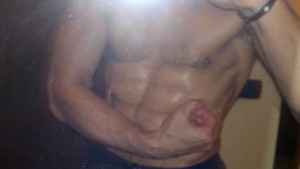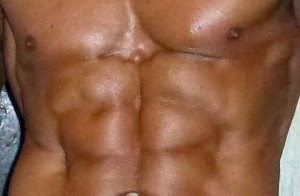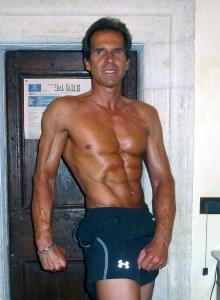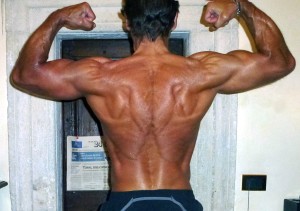Titolo: Attività cardio: Correre per dimagrire convivendo con il Neuroma di Morton….
Autore:Piero Maina
Conteggio Parole: 3242
Come si comprende dal titolo di questo articolo, voglio condividere con voi cosa vuol dire allenarsi anche duramente pur avendo da oramai sette anni la patologia del Neuroma di Morton in entrambi i piedi. Ho già raccontato la mia esperienza sulla forza di volontà nel raggiungimento degli obiettivi e soprattutto per il dimagrimento finalizzato ad una forma fisica atletica all’interno del precedente articolo Burn the Fat la mia esperienza , ma tra i vari infortuni che hanno accompagnato la mia esistenza, non avevo parlato del Neuroma di Morton, ebbene lo faccio qui, visto che pur essendo atleta con un passato anche nell’atletica leggera per il mezzofondo su strada e corsa campestre a livello regionale, utilizzo oggi la corsa/running “solo” come attività complementare per il dimagrimento e quindi come si usa dire, come allenamento “cardio”.
Sappiamo che non esiste solo la corsa come attività che ci faccia consumare ossigeno e metabolizzi i grassi e molti guru del “fat loss” preferiscono altre forme di “cardio” meno impattanti e che non incidano troppo sulla perdita di massa magra, ma sicuramente la corsa, quando la prima finalità è il dimagrimento/perdita di grasso è una di quelle che contribuisce maggiormente allo scopo vista la grande quantità di calorie consumate per ora e praticabile quasi ovunque e in qualsiasi condizione climatica, oltre alla semplicità degli “atrezzi” utilizzati per effettuare una sessione di running (corsa). Quindi se abbinata all’allenamento con i pesi o contro resistenza con regolarità sarà una valida alleata per il raggiungimento del nostro obiettivo di avere un fisico magro e muscoloso, naturalmente se anche l’alimentazione verrà rispettata. Spesso chi corre per dimagrire, sovrastima il consumo di calorie o semplicemente sentendo lo stimolo della fame si “abbuffa” di pietanze ipercaloriche cariche di grassi saturi e carboidrati di “serie b”. Per carboidrati di “serie b”, intendo tutti quegli alimenti contenenti zuccheri raffinati e/o sciroppi ad alto contenuto di fruttosio (non quello presente nei normali frutti così come nascono in natura), tipo lo sciroppo di mais ad elevato contenuto di fruttosio che possiamo trovare in molte barrette energetiche,dolciumi vari e/o anche in molti prodotti cosiddetti dietetici. Comunque se c’è un momento in cui abbiamo l’opportunità di “abbondare” con i carboidrati è senz’altro dopo la nostra sessione di corsa/allenamento. Abbiamo una finestra di circa 45 minuti in cui il nostro organismo è pronto a rifornire le scorte di glicogeno utilizzate e a favorire la sintesi proteica, etc. , ma non dimentichiamo di assumere anche la nostra dose di proteine nobili (uova/albumi, proteine del latte e suoi derivati, pesce o carni bianche,ma anche rosse/tagli magri,etc.; personalmente prediligo i bianchi d’uovo, strapazzati o sodi con un rosso ogni 5/6 bianchi), insieme ai carboidrati (cereali integrali, patate americane/yam, frutta,verdura,etc.; personalmente mangio i fiocchi d’avena integrali/Oatmeal, con un frutto tagliato dentro, spesso una banana). Se durante la nostra sessione di corsa il consumo calorico si attesterà intorno alle 400 calorie, ma a tavola ci abbufferemo di cornetti/brioches, marmellata, cereali raffinati, biscotti,etc. probabilmente la totalità delle calorie supererà abbondantemente le 800 calorie: troppe! Comunque anche se la nostra sessione di corsa supererà le 800 calorie, sarà sempre opportuno scegliere fra i carboidrati di categoria “A” (cereali integrali, pane integrale, riso integrale, patate americane/patate , legumi, frutta e verdura, etc.). In riferimento agli alimenti fra parentesi, bisognerebbe fare un distinguo, stiamo parlando della colazione che è il pasto principale al mattino e di norma dovrebbe anche essere il più abbondante e comunque dopo una sessione di allenamento che ci avrà fatto consumare parecchie calorie. Se bisogna mangiare di più e vogliamo abbondare con i carboidrati siano essi di serie “A” o di serie “B” , questo è il momento più appropriato per assumerli. Naturalmente il discorso andrebbe visto nello specifico dove è importante guardare il soggetto in questione in termini di massa grassa/massa magra corporea, somatotipo, tipo di disciplina sportiva seguita,stato di salute e obiettivi. Pertanto prendete il discorso in via generalizzata e se avete patologie in atto o pregresse, sentite sempre il parere di un bravo medico, possibilmente sportivo o specializzato in scienza dell’alimentazione e non improvvisate.
Torniamo al nostro beneamato cardio, per cardio si intendono tutte le attività che ci facciano usare i grandi muscoli come quelli delle gambe innalzando il battito cardiaco per un periodo di tempo abbastanza prolungato, tutte le discipline che rientrano in queste caratteristiche andranno bene allo scopo, ma in questo articolo parleremo della corsa e anche di come personalmente io riesca a correre con il Neuroma di Morton in entrambi i piedi.
Per chi utilizzerà la corsa come attività cardio complementare, va detto che se non si è allenati non si dovrà iniziare da zero con sedute di corsa da un’ora ciascuna perchè questo causerebbe sicuramente infortuni a livello tendineo/osseo/muscolare e probabilmente ci farebbe fermare evitando gli allenamenti perchè ritenuti troppo duri, facendoci disinnamorare di questa bellissima disciplina. Oltretutto chi corre per dimagrire non necessiterà di sedute di corsa troppo lunghe (oltre i 30/45 min.), e frequenti (tre volte a settimana sono sufficienti di base), ma non è raro (e io sono fra questi) arrivare a un’ora di corsa continuata o anche a superarla. Se così fosse, per attivare maggiormente il metabolismo è consigliabile/preferibile (tempi nella vita quotidiana permettendo e forza di volontà/disciplina forte), dividere la nostra ora di corsa in due sedute da mezz’ora, una al mattino e una alla sera. Quest’ultima ipotesi è da considerarsi solamente per brevi periodi (12/14 settimane a meno che non si faccia della corsa la propria disciplina sportiva) e finalizzata ad obiettivi ambiziosi di massima riduzione del grasso corporeo. Il risultato a livello di attivazione del metabolismo e quindi a una maggiore perdita di grasso anche dopo molto tempo dal termine della nostra corsa, sarà sicuramente amplificato rispetto a chi effettuerà una seduta unica di un’ora/75 min. Gli esperti dicono che con oltre un’ora di corsa si dimagrisce certamente, ma a discapito della massa magra/muscolo, che non è propriamente l’ideale all’interno del nostro piano, visto che dobbiamo cercare di mantenerla a tutti i costi. Come sapete la nostra ricerca va verso il mantenimento/aumento della massa magra e la perdita del solo grasso. Qui il discorso è generalizzato e la durata di ciascuna sessione può anche superare l’ora, ma come tutte le cose ben fatte, bisogna iniziare gradualmente dalle prime sedute di allenamento alternando camminata a passo veloce, alla corsa leggera. Non è qui che voglio creare tabelle ad personam perchè non è lo scopo di questo articolo, nè sono io il “tecnico” più indicato e di bibliografia o siti internet specializzati ne potrete trovare a iosa. Devo solamente aggiungere qualche riga in riferimento all’intensità dell’esercizio per chi corre per dimagrire. Spesso troverete informazioni a riguardo che consigliano di correre a ritmo lento per lungo tempo allo scopo di bruciare più grassi rispetto agli zuccheri. Va detto che la frequenza cardiaca cambia in ciascuno di noi a seconda dell’età e del grado di portata dell’ossigeno nel sangue (VO2 Max) e anche ad altri fattori, ma mediamente per trovare la nostra frequenza cardiaca massima, si utilizza la formula di 220 a cui sottrarre la propria età. Pertanto il valore massimo per un cinquantenne si attesterà intorno ai 170 bpm. Quindi per riprendere il discorso iniziato sopra, se dovessimo seguire il consiglio di correre per un’ora al 60% della nostra frequenza cardiaca massima, dovremmo correre ad una velocità/cadenza che mantenga il nostro battito cardiaco intorno ai 102 bpm. Vi assicuro che per arrivare a 102 bpm (battiti per minuto) basterà camminare a passo spedito e se poi la strada è leggermente in salita, sarà facile superare quella soglia ancor di più. Inoltre il consumo di calorie ad una frequenza cardiaca del 60% sarà piuttosto bassa. Pertanto è vero che il consumo dei grassi sarà maggiore andando ad un ritmo così lento, ma il consumo di calorie totale sarà troppo basso. Il mio consiglio quand’anche non si facciano già delle sedute di HIIT (High Intensity Interval Training) è di aumentare l’intensità durante la nostra sessione di corsa, pur mantenendola in un range ancora conservativo. Diciamo di utilizzare quella che sul cardiofrequenzimetro si chiama “Own Zone” , che va dal 65% all’85% della nostra soglia massima ed è anche quella che uso personalmente come riferimento. Ogni tanto spingerò oltre questa soglia,soprattutto nelle salite e negli ultimi tratti (Alla fine la media per me sarà intorno ai 135 bpm). In questo modo è vero che bruceremo anche più zuccheri, ma soprattutto più calorie che sono poi quelle che contano in ultimo. Per dimagrire e perdere grasso bisogna SEMPRE creare un deficit fra le calorie ingerite e quelle spese durante la giornata fra metabolismo basale (MB) più tutte le attività del giorno, corsa e lavori domestici inclusi. Quello che vado a scrivere qui sotto è valido in generale, oltre a riportare le esperienze dirette del sottoscritto.
Pertanto in un ottica di avvicinamento alla corsa che ci aiuti a dimagrire senza per questo sacrificare il lavoro svolto in palestra e quindi con finalità di perdita del solo grasso senza cannibalizzare muscolo/massa magra, è comunque saggio iniziare gradualmente soprattutto se chi comincia sarà un individuo sovrappeso. Il modo migliore di iniziare è quello di alternare la camminata veloce alla corsa lenta e alla corsa media per un periodo di almeno 4 settimane estendibile anche a 8/12. Lo scopo per un soggetto non troppo sovrappeso sarà quello di abituare sia l’apparato cardiovascolare che l’apparato scheletrico, muscolare e tendineo ad un’attività ad alto impatto che farà aumentare notevolmente i carichi di lavoro rispetto al tipo di vita svolto precedentemente, e l’infortunio, soprattutto se si vuole “strafare” è dietro l’angolo. Pertanto prendiamoci i nostri tempi di adattamento e il nostro avviamento alla corsa per un impegno settimanale di tre giorni, potrebbe essere così:
* Prima settimana:
Giorno 1: 5′ Camminata Veloce + 2′ Corsa Lenta x 4 ripetizioni = Tot. 28′ allenamento
Giorno 2: Riposo o Stretching o Mobilità attiva
Giorno 3: 5′ Camminata Veloce + 3′ Corsa Lenta x 4 ripetizioni = Tot. 32′ allenamento
Giorno 4: Riposo o Stretching o Mobilità attiva
Giorno 5: 5′ Camminata Veloce + 3′ Corsa Lenta x 4 ripetizioni = Tot. 32′ allenamento
Giorno 6: Riposo o Stretching o Mobilità attiva
Giorno 7: Riposo o Stretching o Mobilità attiva
Seconda settimana:
Giorno 1: 7′ Camminata Veloce + 2′ Corsa Lenta x 2 ripetizioni + 7′ Camminata Veloce + 2′ Corsa Lenta + 1′ Corsa Media x 2 ripetizioni = Tot. 40′ allenamento
Giorno 2: Riposo o Stretching o Mobilità attiva
Giorno 3: 7′ Camminata Veloce + 3′ Corsa Lenta x 2 ripetizioni + 6′ Camminata Veloce + 1′ Corsa Lenta + 1′ Corsa Media + 1′ Corsa Lenta + 1′ Corsa Media x 2 ripetizioni = Tot. 40′ allenamento
Giorno 4: Riposo o Stretching o Mobilità attiva
Giorno 5: 6′ Camminata Veloce + 1′ Corsa Lenta + 1′ Corsa Media + 1′ Corsa Lenta + 1′ Corsa Media x 4 ripetizioni = Tot. 40′ allenamento
Giorno 6: Riposo o Stretching o Mobilità attiva
Giorno 7: Riposo o Stretching o Mobilità attiva
Terza settimana:
Giorno 1: 4′ Camminata Veloce + 2′ Corsa Lenta + 1′ Corsa Media + 2′ Corsa Lenta + 1′ Corsa Media x 4 ripetizioni = Tot. 44′ allenamento
Giorno 2: Riposo o Stretching o Mobilità attiva
Giorno 3: 3′ Camminata Veloce + 3′ Corsa Lenta + 1′ Corsa Media + 3′ Corsa Lenta + 1′ Corsa Media x 4 ripetizioni = Tot. 44′ allenamento
Giorno 4: Riposo o Stretching o Mobilità attiva
Giorno 5: 2′ Camminata Veloce + 4′ Corsa Lenta + 1′ Corsa Media + 4′ Corsa Lenta + 1′ Corsa Media x 4 ripetizioni = Tot. 44′ allenamento
Giorno 6: Riposo o Stretching o Mobilità attiva
Giorno 7: Riposo o Stretching o Mobilità attiva
4′ Camminata Veloce + 2′ Corsa Lenta + 1′ Corsa Media + 2′ Corsa Lenta + 1′ Corsa Media x 4 ripetizioni = Tot. 44′ allenamento
4′ Camminata Veloce + 2′ Corsa Lenta + 1′ Corsa Media + 2′ Corsa Lenta + 1′ Corsa Media x 4 ripetizioni = Tot. 44′ allenamento
4′ Camminata Veloce + 2′ Corsa Lenta + 1′ Corsa Media + 2′ Corsa Lenta + 1′ Corsa Media x 4 ripetizioni = Tot. 44′ allenamento
Quarta settimana:
Giorno 1: 1′ Camminata Veloce + 5′ Corsa Lenta + 2′ Corsa Media + 5′ Corsa Lenta + 2′ Corsa Media x 4 ripetizioni = Tot. 60′ allenamento
Giorno 2: Riposo o Stretching o Mobilità attiva
Giorno 3: 6′ Corsa Lenta + 2′ Corsa Media x 8 ripetizioni = Tot. 64′ allenamento
Giorno 4: Riposo o Stretching o Mobilità attiva
Giorno 5: 5′ Corsa Lenta + 3′ Corsa Media x 8 ripetizioni = Tot. 64′ allenamento
Giorno 6: Riposo o Stretching o Mobilità attiva
Giorno 7: Riposo o Stretching o Mobilità attiva
4′ Camminata Veloce + 2′ Corsa Lenta + 1′ Corsa Media + 2′ Corsa Lenta + 1′ Corsa Media x 4 ripetizioni = Tot. 44′ allenamento
4′ Camminata Veloce + 2′ Corsa Lenta + 1′ Corsa Media + 2′ Corsa Lenta + 1′ Corsa Media x 4 ripetizioni = Tot. 44′ allenamento
4′ Camminata Veloce + 2′ Corsa Lenta + 1′ Corsa Media + 2′ Corsa Lenta + 1′ Corsa Media x 4 ripetizioni = Tot. 44′ allenamento
* Tabelle prese dal libro “Correre” del Dr. Marco di Monte
Quindi se seguiremo le tabelle del Dr. Marco di Monte, già dopo 4 settimane saremo in grado di correre per cica un’ora senza soste e ciò è sicuramente più che sufficiente. Se uno dopo aver iniziato a correre si appassionerà a questa disciplina, allora cambieranno le tabelle e anche l’alimentazione e se disciplinati nella scelta degli alimenti e nell’esecuzione degli allenamenti, il dimagrimento resterà assicurato e anche il benessere psicofisico ne beneficerà, certo la sola corsa devia da quello che il programma di Burn the Fat Feed the Muscle ci ha insegnato.
Per i soggetti fortemente sovrappeso la corsa lenta/camminata veloce resta una delle attività che li aiuterà all’avvicinamento verso un mondo più magro. Sempre nello stesso libro ci sono tabelle per l’avviamento alla corsa per i soggetti obesi. Ovviamente quanto espresso sopra, sarà maggiormente “diluito”, visto che coloro che vengono considerati obesi e quindi sono affetti da una vera e propria patologia, necessiteranno di maggiori attenzioni soprattutto all’inizio, al fine di non sovraccaricare troppo le articolazioni, ma anche l’apparato cardiovascolare e quindi la camminata alternata alla corsa lenta saranno gli esercizi da effettuare in partenza coadiuvati da un regime alimentare finalizzato alla perdita di grasso e un obiettivo a medio lungo termine che diventi un vero e proprio stile di vita. Una volta ingranato nel nostro subconscio e complici anche i risultati che si otterranno, l’entusiasmo farà si che tutto avvenga più velocemente e con maggiore soddisfazione.
Torniamo ora a me e al concetto espresso nel titolo di questo articolo. In questo momento sto terminando la solita sfida estiva “Burn the Fat Feed the Muscle – Summer Challenge” che premierà la miglior trasformazione corporea di partecipanti provenienti da tutto il mondo e con fisici estremamenti diversi. Lo scopo è quello di raggiungere il miglior stato di forma e di dimagrimento (di grasso e non totale), in quattordici settimane, mantenendo e/o anche aumentando la massa magra senza “aiuti” di sostanze anabolizzanti. In questa prova ci sono soggetti di tutte le età e anche molti obesi, così come body builder o persone normalissime. Per me è la terza sfida quest’anno, avendo già completato quelle del 2010/2011. Mancano solamente due settimane al termine e mi trovo al di sotto del 7% di massa grassa con un obiettivo al di sotto del 6% in data 10 Settembre. L’attività cardio che ho usato maggiormente è stata la corsa alternata al nuoto, avrei voluto inserire anche la bici, ma non l’ho fatto per ragioni mie. Sono comunque certo di cominciare ad usarla nel prossimo futuro. In questo momento essendo in montagna non sto nuotando, ma corro soltanto con una frequenza di sei giorni su sette (uno di riposo), e con percorsi che vanno dagli 8 ai 17 km e HIIT (High Intensity Interval Training). (Qui c’è la spiegazione da Wikipedia in Inglese, ma se digiterete HIIT su Google troverete molti siti anche in Italiano che vi spiegano di cosa si tratta)
Parliamo ora del Neuroma di Morton: durante i primi due anni dalla sua comparsa nel 2005, camminare era molto difficile anche se all’inizio la patologia era presente nel solo piede destro. Sono stato visitato da un professore di Roma, specializzato proprio nel Nuroma di Morton, che mi ha consigliato di indossare plantari ortopedici su misura molto morbidi prodotti da un laboratorio artigianale che collaborava con lui. Poi mi propose nell’eventualità che il dolore fosse troppo forte di procedere prima con infiltrazioni di cortisone e poi, eventualmente, con l’alcolizzazione dei nervi del piede presenti tra il terzo e il quarto dito, dove il neuroma era/è situato, per poi in ultima ipotesi procedere con l’operazione di recisione dei nervi soprammenzionati, con il risultato di rimuovere il dolore, ma nel contempo, perdere la sensibilità nelle dita del piede destro.
Iniziai con l’indossare le scarpe MBT (Masai Barefoot Technology),) scarpe basculanti che perlomeno, data la loro conformazione mi evitavano di caricare l’avampiede durante la camminata ( all’epoca poi non correvo, ma giocavo solo a golf), e quindi ricevevo sollievo dal dolore nel piede. Questo anche per via della conformazione di queste scarpe a pianta larga. Il Neuroma di Morton è infatti conosciuto anche con il nome di “Sindrome delle scarpe strette” e quindi tutte quelle calzature che stringono l’avampiede risultano dolorose anche se comode, (anche scarpe da running/ginnastica) e nel mio caso specifico ho le piante dei piedi larghissime (115 mm.). Nel frattempo la patologia si rivelò presente anche nel piede sinistro con dolori terribili, soprattutto la notte durante il sonno. Contestualmente iniziai delle sedute da una osteopata che con massaggi e stretching e scarpe comode a pianta larga con plantari su misura per attività sportiva, costruiti negli USA, questo mi portò giovamento e non utilizzai più le MBT, ma principalmente scarpe da running e la camminata diventò normale. (Per la cronaca porto i plantari in qualsiasi calzatura indossi, scarponi da sci compresi)
Situazione normalizzata, ma i dolori non erano scomparsi completamente, era migliorata la camminata e quindi la qualità della vita in generale, i dolori arrivavano meno frequentemente, ma intensissimi, soprattutto la notte e poi alcune volte con gli scarponi da sci (mea culpa perchè utilizzo ancora scarponi da gara molto stretti con plastiche molto rigide che sono gli stessi di quando facevo attività agonistica), soprattutto nelle giornate più fredde. Quando arriva l’ora di toglierli è veramente un inferno, ma ultimamente sono riuscito a non soffrire troppo durante questa operazione. Nel piede destro il famoso “Click/Clack” quando muovo le dita si sente sempre, mentre il sinistro è silente, ma nella notte è quello che mi crea maggiori fastidi con le fitte. Negli ultimi mesi, complice anche la corsa e i balzi del P90X ho avuto un risveglio del dolore nel piede destro, tanto da non poter quasi più correre e/o camminare sentendo proprio una protuberanza fra il terzo è quarto dito al di sotto del piede. Quando effettuavo la “rullata” del piede appoggiandomi appunto sull’avampiede, il dolore era insopportabile, constringendomi ad assumere posture e camminate fuori norma. Ho continuato a correre lo stesso, ma sentivo che stavo compremettendo altre parti del mio corpo, visto che compensavo il deficit appoggiandomi in maniera non convenzionale. Ho ricercato su i vari siti internet se c’erano novità nel campo e qualcosa di nuovo sembra esserci, con un intervento in via endoscopica che allarga la parte in cui il neuroma viene compresso fra i nervi, ma di operarmi in questo momento non me la sentivo anche perchè ero nel pieno della Summer Challenge e questo avrebbe compromesso tutto. Quindi ho optato per l’infiltrazione di cortisone e senza essermi mai fermato con la corsa (facevo magari 3 sessioni a settimana), sono arrrivato nel giro di un mese a non provare più il dolore che mi aveva accompagnato fino ad allora e sono arrivato a correre anche 6 giorni a settimana con distanze superiori anche ai 20/30 km. (Ora non faccio lunghi perchè come ho spiegato sopra non è questa la mia finalità, ma ogni tanto allungo il percorso).
Che dire, finché resisterò, non ricorrerò all’operazione; certo il neuroma è veramente fastidioso/doloroso e oramai non ricordo più cosa voglia dire camminare senza sentire fastidio/dolore e “schioccate” fra le dita, oltre ai crampi soprattutto dopo la corsa quando mi appoggio sul dorso dei piedi (nella posizione child pose). Al momento sto abbastanza bene e vedrò che decisione prendere dopo l’effetto benefico del cortisone, soprattutto in inverno con gli scarponi da sci. Rimango in attesa, fiducioso che prima o poi risolverò anche questo problema, la forza di volontà e il desiderio di riuscire sono per me i più validi alleati nella risoluzione dei problemi e il raggiungimento degli obietttivi. Buon allenamento e mi raccomando bruciate grasso!
© Copyright Piero Maina – Tutti i diritti riservati
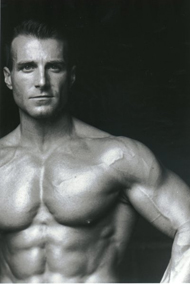 Burning Secrets of the World’s Best Bodybuilders and
Burning Secrets of the World’s Best Bodybuilders and 













